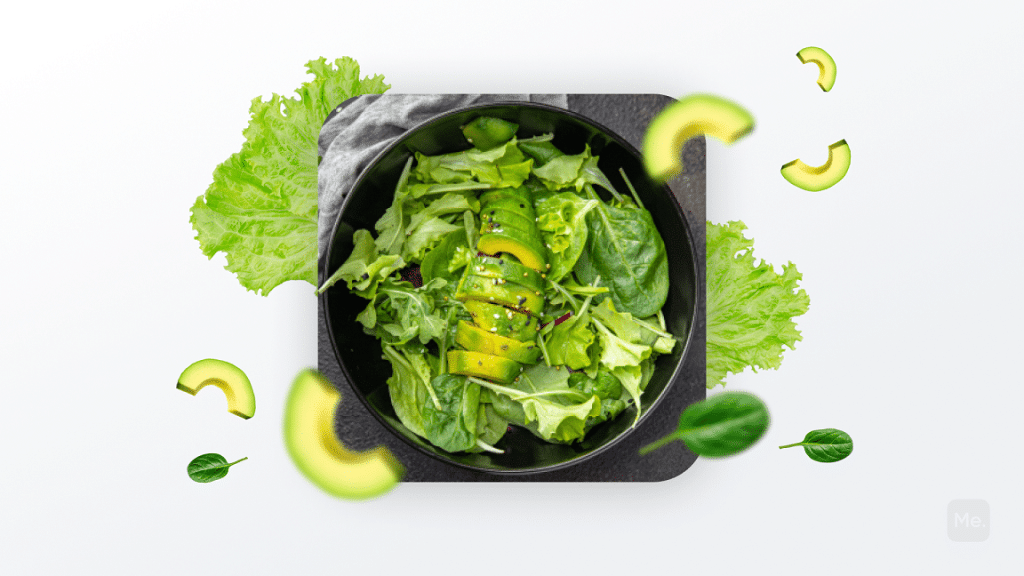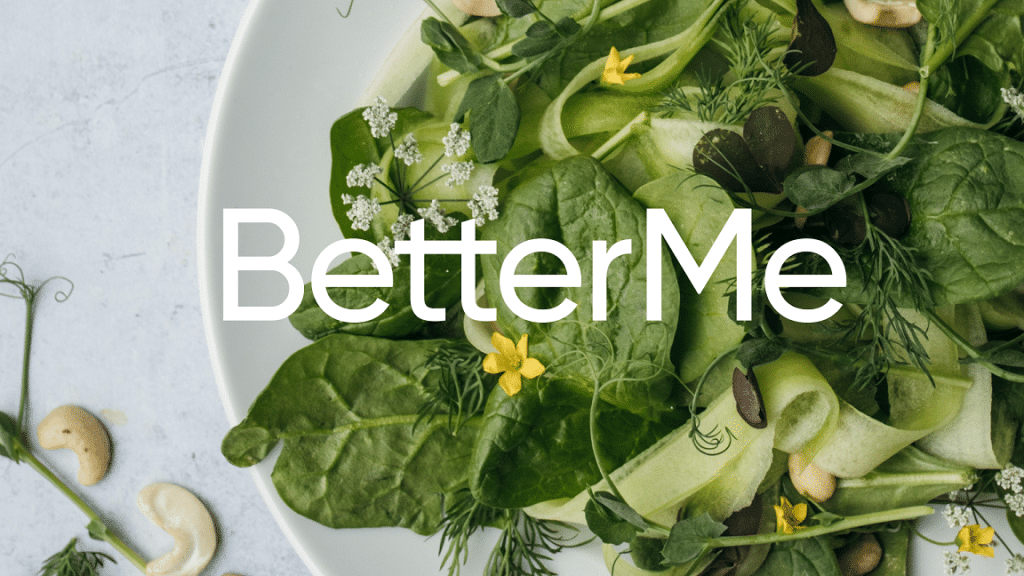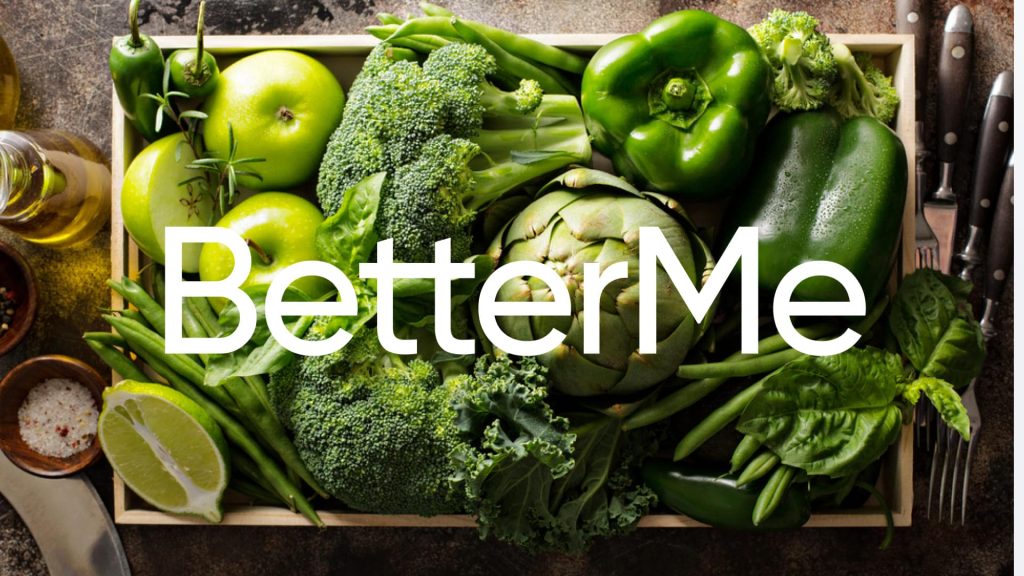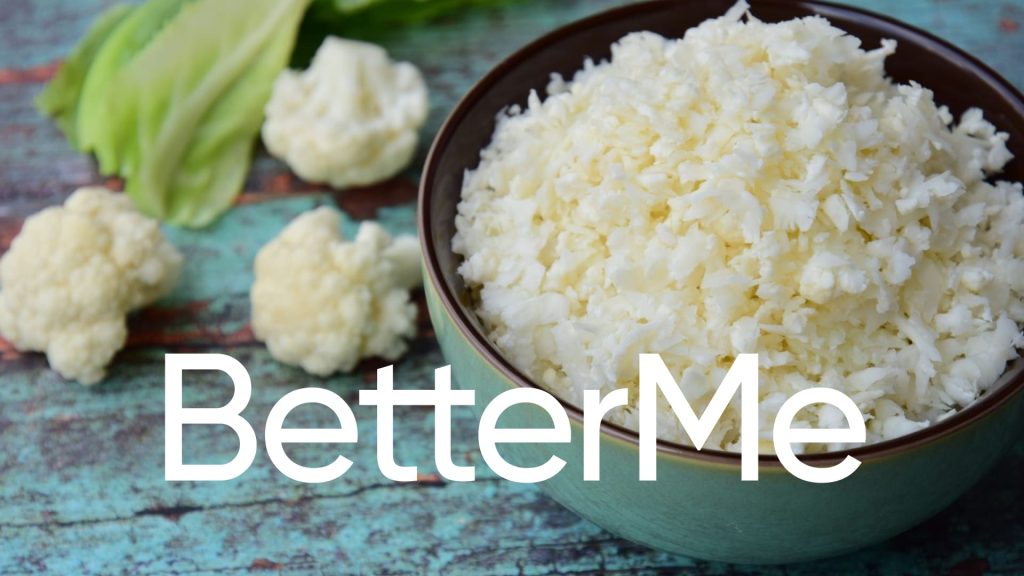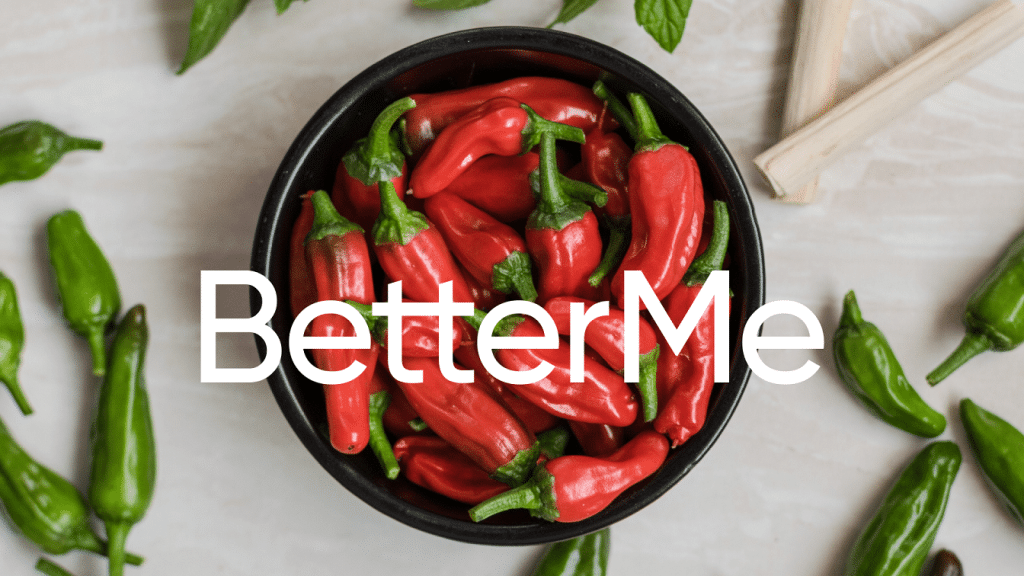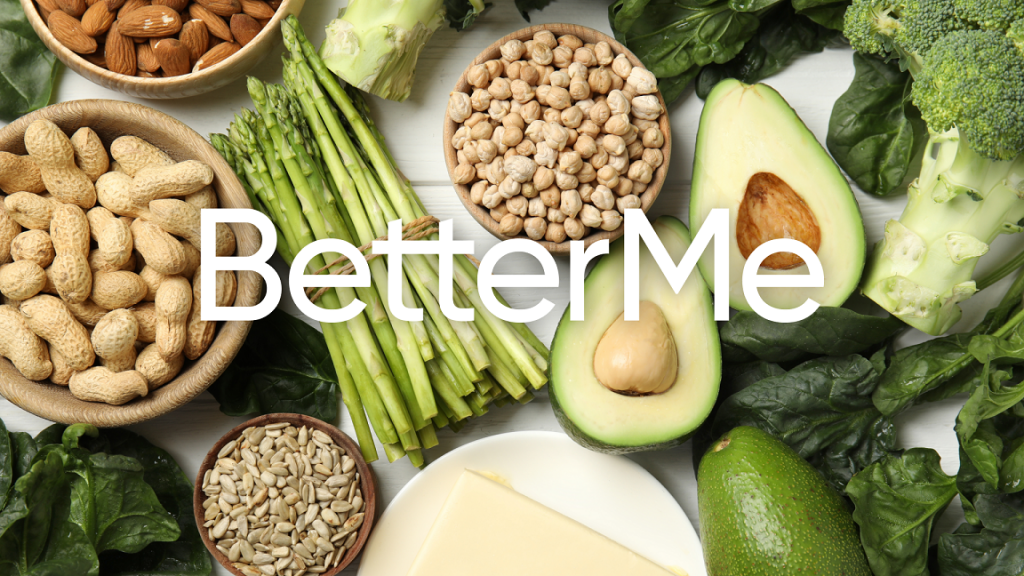Have you ever heard about such a thing as super vegetables? Many may answer no simply because the name might throw them off. Believe it or not, your fridge and pantry are already packed with those! To put it simply, ‘super vegetables’ is a term used to refer to veggies with high nutritional content.
Get your personalized
meal plan!
Knowing your super vegetables is crucial, especially if you are trying to adopt healthy eating habits or shed a couple of pounds. These foods can help you reach such goals as they have low calories and are packed with antioxidants, fiber, vitamins, and minerals. Let us look at the list of ten vegetables that can help you live a healthier life, lose weight, or reap other health benefits.
The Top Ten Super Vegetables
Believe it or not, this list does not contain any new vegetables. It includes vegetables you perhaps have in your kitchen but possibly could not tell of their worth. Without further ado, here are the top ten super vegetables you need to stock in your next grocery shopping:
Spinach
Spinach is a leafy green vegetable that ranks high among the super healthy vegetables. It is low calorie, making it a great vegetable choice if you want to lose weight. Similarly, spinach is loaded with so many nutrients. According to Medical News Today, one cup of raw spinach has the following nutrients (5):
- Calories- 7
- Magnesium- 24 mg
- Protein- 0.86 g
- Calcium- 30 mg
- Iron- 0.81 g
- Potassium- 167 mg
- Vitamin A- 2, 813 IU
- Folate- 58 mcg
- The serving also contains a decent amount of thiamine, fiber, and phosphorus
Health Benefits
The impressive nutritional profile is one of the reasons why most people consume spinach. Nonetheless, spinach is also consumed for its numerous health benefits. Some of these include (5):
- Helping with diabetes management. The leafy green vegetable contains an antioxidant called alpha-lipoic acid. It may lower glucose levels, increase insulin sensitivity, and prevent oxidative stress-induced changes in diabetic patients.
- Preventing cancer. Like any other green vegetable, spinach contains chlorophyll. Chlorophyll may block the carcinogenic effects of heterocyclic amines that cause cancer.
- Preventing asthma. High intakes of beta-carotene and other nutrients may be associated with a lower risk of asthma in children.
- Lowering blood pressure. As seen from the nutritional profile of a one-cup serving of spinach, it has 167 mg of potassium. Potassium can help reduce the effects of sodium in your body. High sodium content is one risk factor for high blood pressure.
- Maintaining healthy hair and skin. The large quantities of vitamin A in spinach may help in the growth of your hair and collagen building, as well as healthy skin maintenance.
Ways To Eat
Luckily, there are numerous ways in which you can have spinach. Do not, therefore, stick to only one recipe. Here are some healthy ways to have spinach leaves (13):
- Eating them raw in a salad. Make sure you wash the vegetables thoroughly and use a healthy salad dressing, especially if your goal is weight loss.
- Having them in green juices or smoothies. Be cautious of your servings as too many servings may increase your calorie intake and compromise your weight loss results.
- By having them in soups, dips, quiches, or sautéed dishes.
Want to build an attention-grabbing bubble butt, blast away fat that’s stored in all the wrong places, spring-clean your diet, turn back the clock on your skin, skyrocket your self-confidence and shatter your insecurities? Check out the BetterMe app and set this plan in motion!
Kale
The next powerhouse in this super vegetable list is kale. It is a leafy green cruciferous vegetable that is loved for its wealth in nutrients. Below is a look at the nutritional content of one cup (118 g) of boiled kale without added salt (11):
- Calories- 42.5
- Protein- 3.5 g
- Fiber- 4.7 g
- Carbs- 6.3 g (inclusive of 1.4 g of sugar)
- Calcium- 177 mg
- Iron- 1 mg
- Phosphorus- 49.6 mg
- Magnesium- 29.5 mg
- Zinc- 0.3 mg
- Sodium- 18.9 mg
- Potassium- 170 mg
- Manganese- 0.6 mg
- Copper- 0.8 mg
- Folate- 76.7 mcg DFE
- Beta carotene- 2, 040 mcg
- Selenium- 1.1 mcg
- The vegetable also contains betaine, lutein, and vitamins C, E, A, and K
Health Benefits
Eating kale comes with several health benefits. Some of these include (11):
- Reduced risk of diseases and inflammation. Kale contains antioxidants that help with removing unwanted toxins from your body. These toxins are also known as free radicals. They are unstable molecules, which, if they continue building up, increase your risk of diseases such as cancer.
- Improved heart health. The potassium obtained from kale consumption may help reduce your high blood pressure, one of the risk factors of cardiovascular diseases. Kale also provides you with fiber, which lowers LDL levels (bad cholesterol), another risk factor for heart diseases.
- Better bone health. Kale provides you with nutrients such as calcium and phosphorus. The two are vital for healthy bone formation.
- Improved digestion. This cruciferous vegetable contains water and fiber that help with preventing constipation and improving digestion.
- Better eye health. Kale also contains zeaxanthin and lutein that reduce the risk of age-related eye conditions like macular degeneration. It also contains beta-carotene and zinc that help with the maintenance of good eye health.
Ways To Eat
You can never be bored for lack of choices when it comes to preparing kale. Here are some methods you can try (6):
- By adding it to cooked meals such as stir-fries, soups, or any pasta dish.
- Eating them raw in a salad. Like with any other vegetable, remember to wash the vegetable thoroughly. You can also add some lemon juice or a healthy dressing to enhance the flavor of your kale salad.
- By preparing a smoothie. Kale is one of the ingredients you can consider when preparing a green smoothie for weight loss.
- By sautéing it with some olive oil and garlic and then having it alongside some mushrooms, beans, or chicken meals.
- By roasting it to make kale chips.
Broccoli
It is without a doubt that broccoli is a superfood. The title comes from its countless health benefits and richness in nutrients. Below is the nutritional information of one cup of broccoli weighing about 76 g (8):
- Calories- 24.3
- Fiber- 1.82 g
- Folate- 49.4 mcg
- Carbohydrate- 4.78 g (including 1 g of sugar)
- Phosphorus- 50.9 mg
- Calcium- 35 mg
- Vitamin A- 6.08 mcg
- Potassium- 230 mg
- Vitamin C- 40.5 mg
- Beta-carotene- 70.7 mcg
- Lutein and zeaxanthin- 566 mcg
- Vitamin K- 77.5 mcg
- Vitamin E- 0.11 mg
Health Benefits
We understand, most people hate vegetables, especially broccoli. Perhaps this list of the health benefits of broccoli may help you change your mind. Take a look at health gains associated with broccoli consumption (7):
- Reduced cancer risk. Broccoli contains antioxidants that may prevent cell damage leading to cancer.
- Improved bone health. The vegetable contains calcium and vitamin C which are vital for strong bones. It also contains vitamin K that helps in preventing and treating osteoporosis.
- Boosted immunity. The vitamin C obtained from broccoli may promote immune health by preventing anemia, heart diseases, and cancer.
- Improved skin health. Vitamin C obtained from broccoli produces collagen, an essential element for healthy skin. The vitamin also helps prevent skin damage, including wrinkles arising from natural aging.
- Improved digestion. Broccoli is pretty rich in fiber, which helps in preventing constipation and maintaining a healthy digestive tract.
- Reducing inflammation. The anti-inflammatory properties of broccoli may help reduce inflammation, especially among individuals with chronic autoimmune conditions like type 1 diabetes and arthritis.
Ways To Eat
If you have never prepared broccoli, you may be wondering how to go about preparing this vegetable. It is pretty easy to prepare such super vegetables for weight loss. You can either roast your broccoli, mix it in warm salads, blend it in soups, or steam it. These are some of the healthiest ways to cook broccoli and prompt weight loss.
Read More: A 5-Day Broccoli Diet Plan Can Help You Lose Weight In A Healthy Way
Cauliflower
Cauliflower is another cruciferous vegetable that is also considered a super vegetable. It is naturally high in B vitamins and fiber. That said, these are not the only nutrients found in cauliflower. Take a look at the nutritional content of one cup (about 107 g) of raw cauliflower, chopped and cut into half-inch pieces (3):
- Calories- 27
- Total fat- 0.3 g
- Protein- 2 g
- Carbohydrate- 5 g (inclusive of 2 g of sugar and 2.1 g of fiber)
- Magnesium- 16 mg
- Potassium- 320 mg
- Calcium- 24 mg
- Phosphorus- 47 mg
- Vitamin C- 51.6 mg
- Vitamin K- 16.6 mcg
- Folate- 61 mcg
- Vitamin B-6 -0.197 mcg
- Small amounts of riboflavin, pantothenic acid, thiamin, niacin, and manganese
Health Benefits
Consuming this super vegetable has been found to help one reap various health benefits. They include (3):
- Better weight management. The cruciferous vegetable has low calories that may help you maintain a calorie deficit for weight loss. Likewise, the vegetable is rich in fiber, which helps in increasing satiety, consequently reducing overeating.
- Improved digestion. Cauliflower has both water and fiber, crucial for preventing constipation, maintaining a healthy digestive tract, and reducing colon cancer risk.
- Improved memory. Cauliflower contains a vitamin-like element known as choline. It helps with memory improvement, sleep, movement, and learning.
- Better bone health. Vitamin k present in cauliflower helps in reducing bone fractures and osteoporosis risk.
- Better circulation. Cauliflower has high fiber content. A high intake of fiber has been associated with reduced cardiovascular risks, hence healthy circulation.
Ways To Eat
If you are puzzled about how to consume or prepare your cauliflower, then take a look at the following ideas (3):
- Pulsing raw cauliflower in the blender to make cauliflower rice.
- Turning your blended cauliflower mix into a pizza base to create a low-calorie pizza treat.
- Baking cauliflower with some olive oil and garlic.
- Adding it in curries.
Seaweed
Seaweed is sometimes referred to as sea vegetables. There are several varieties of these nutritious plants. Some of them include sea lettuce, wakame, nori, kelp, and spirulina (12).
Health Benefits
This vegetable ranks among super vegetables for the following reasons (12):
- They contain a variety of nutrients. Seaweed contains omega-3 fatty acids, vitamins A, B-1, B-2, C, and K, iodine, and other vital nutrients and minerals.
- They help support thyroid function. The iodine found in these sea vegetables helps prevent thyroid problems that may lead to hyperthyroidism or hypothyroidism.
- They are rich in antioxidants that help in reducing cell damage that may cause cancer.
Ways To Eat
If you have never had seaweed before, you may want to consult with a professional to make sure you are not allergic to these vegetables. When you do get this go-ahead to consume them, consider various seaweed recipes. The most popular recipes will have you enjoy these vegetables as a seasoning for other dishes, in miso soups or sushi (12).
When it comes to weight loss, progress is made by inches, not miles, so it’s much harder to track and a lot easier to give up. BetterMe app is your personal trainer, nutritionist, and support system all in one. Start using our app to stay on track and hold yourself accountable!
Bell Peppers
Bell peppers are also other super vegetables that most people consume either raw or when cooked. They are part of the nightshade family and vary in color, depending on how ripe they are (1). They may be red, green, orange, red, or purple.
Health Benefits
Like with the other super vegetables in this list, bell peppers are loved for their health benefits. Take a look at some potential health benefits of eating bell peppers (1):
- High vitamin C intake. Bell peppers, especially the red ones, are rich in vitamin C. Half a cup of raw red peppers will provide you with 95 mg of vitamin C (1). Vitamin C is essential in our bodies as it helps perform various roles. It helps in collagen production, protein metabolism, and supporting the immune system.
- Vitamin A intake. Vitamin A present in red peppers helps with reproduction, vision, immune functioning, cell growth, and organs’ normal functioning.
- Increased antioxidant intake. Bell peppers are excellent antioxidant sources that can protect your body against oxidative damages.
- Improved eye health. Peppers contain carotenoids like zeaxanthin and lutein that may help in protecting your eye health.
Ways To Eat
To prepare these vegetables, you can choose to either roast, fry or grill them. You can also make a dip by pureeing roasted peppers with things like garlic and lemon juice or stuffing them.
However, you have to be cautious of these vegetables. Medical News Today acknowledges that these vegetables may be fatal if you have bell pepper or nightshade allergy (1). Make sure you first talk to a healthcare provider before adding bell peppers to your diet plan.
Beets
Beets are also excellent vegetables to consider if you are looking for healthy food options. They are packed with numerous nutrients. One cup of raw beets will provide you with the following nutrients (10):
- Calories- 58.5
- Carbs- 13 g (inclusive of 9.19 g and 3.81 g of fiber)
- Protein- 2.19 g
- Folate- 37% of the daily requirements
- Phosphorus- 7.77% of the adult’s daily requirements
- Magnesium- 7.83% for the men’s daily requirements and 10.97% of the women’s daily requirements
- Small amounts of iron, calcium, thiamine, copper, selenium, riboflavin, and vitamin B-6
Health Benefits
Adding these super vegetables to your diet can help you receive these nutrients and other health benefits. Some of them include (10):
- Diabetes management. Beets contain an antioxidant referred to as alpha-lipoic acid which may help lower glucose levels and increase insulin sensitivity, both of which are pivotal for diabetes management.
- Improving digestion. One cup of beetroot contains 3.81 g of fiber. It is crucial for the maintenance of a healthy gut and smooth digestion.
- Improved exercise and athletic performance. If you are looking for a vegetable to make you strong by boosting your training and athletic performance, try beets. Search for super vegetable drink recipes using beets as their primary ingredient to prepare yourself some beet juice.
Cabbage
Like its sister broccoli, cabbage is an example of a cruciferous vegetable packed with beneficial nutrients. Half a cup (75 g) of shredded cabbage contains the following nutrients (9):
- Calories- 17
- Carbohydrate- 4 g (inclusive of 1 g of fiber and 2 g of sugar)
- Protein- 1 g
- Folate- 22 mcg
- Magnesium- 11 mg
- Vitamin K- 81.5 mcg
- Lesser amounts of thiamin, potassium, and calcium. It also contains antioxidants like lutein, beta-carotene, choline, and zeaxanthin.
Health Benefits
Consuming any super fruit or vegetable is associated with numerous health gains. Some of the gains you could reap by consuming this super vegetable include (9):
- Cancer prevention as cabbage contains a cancer-fighting compound known as sulforaphane.
- Better heart health as cabbage contains polyphenols that may reduce your blood pressure and flavonoids that might help lower heart disease mortality risk.
- Better immunity and digestion due to its high nutrients, water, and fiber content.
Read More: 7 Day Cabbage Soup Diet To Make The Scale Tip In Your Favor
Tomatoes
Tomatoes are considered both super fruits and super vegetables. They are packed with nutrients. One cup of sliced or chopped raw tomatoes has the following nutrients (4):
- Calories- 32
- Fiber- 2.2 g
- Cholesterol- 0 g
- Water- 170.14 g
- Protein- 1.58 g
- Carbohydrate- 5.8 g
- Calcium- 18 mg
- Vitamin C- 24.7 mg
- Potassium- 427 mg
- Phosphorus- 43 mg
- Vitamin A- 1499 IU
Health Benefits
The following nutrients attribute to the numerous health benefits of consuming tomatoes, some of which include (4):
- Improved eye health due to the richness of beta-carotene, lycopene, and lutein.
- Reduced constipation as tomatoes have a high water and fiber content.
- Reduced blood pressure as they provide you with potassium which can counteract the effects of sodium to maintain healthy blood pressure.
- Better skin, nails and hair due to the production of collagen supported by vitamin C.
- Reduced cancer risk due to its excellent supply of antioxidants and vitamin C which can fight free radicals.
Ways To Eat
You can have tomatoes in numerous ways. You can eat them raw, have them in your salad, soups, grill them, roast them, or blend them to make some tomato sauce to use in your pasta dishes.
Asparagus
The other popular super vegetable is asparagus. Like with other super vegetables in this list, it is packed with numerous nutrients. One cup (134 g) of raw asparagus contains the following nutrients (2):
- Calories- 26.8
- Fiber- 2.8 g
- Carbohydrate- 5.2 g (including 2.5 g of sugar)
- Zinc- 0.7 mg
- Protein- 3 g
- Iron- 2.9 mg
- Calcium- 32.2 mg
- Phosphorus- 69.7 mg
- Magnesium- 18.8 mg
- Potassium- 271 mg
- Manganese- 0.2 mg
- Beta-carotene- 602 mcg
Health Benefits
You can eat asparagus raw or grill, roast, or oven-roast it to enjoy any of the following potential health benefits (2):
- Lowered depression risk. Asparagus contains folate, which may prevent too much homocysteine from building up in the body. Homocysteine is an amino acid that, if present in to high a concentration, may interfere with the production of hormones that regulate mood, sleep, and appetite.
- Reduced stroke risk as the folate acquired from this vegetable helps in managing your homocysteine levels.
- Reduced heart diseases risk due to high fiber, antioxidants, and potassium that promote heart health.
- Improved digestion due to its richness in water and fiber.
- Reduced cancer risk due to the high fiber content that helps prevent colorectal cancer and antioxidants that get rid of free radicals.
The Bottom-Line
Consuming super vegetables is crucial as it can help you receive various nutrients, minerals, vitamins, and antioxidants. They can also help you reap other health benefits such as improved eye and bone health. The top ten super vegetables to consider include asparagus, spinach, kale, cabbage, beets, tomatoes, seaweed, broccoli, cauliflower, and bell peppers. Remember to talk to your doctor before making any dietary changes.
DISCLAIMER:
This article is intended for general informational purposes only and does not address individual circumstances. It is not a substitute for professional advice or help and should not be relied on for decision-making. Any action you take upon the information presented in this article is strictly at your own risk and responsibility!
SOURCES:
- Everything to know about bell peppers (2021, medicalnewstoday.com)
- Everything you need to know about asparagus (2019, medicalnewstoday.com)
- All you need to know about cauliflower (2017, medicalnewstoday.com)
- Everything you need to know about tomatoes (2017, medicalnewstoday.com)
- Health benefits and nutritional profile of spinach (2018, medicalnewstoday.com)
- Healthy food trends-kale (2020, medlineplus.gov)
- Slide show: 10 great health foods (2019, mayoclinic.org)
- The health benefits of broccoli (2020, medicalnewstoday.com)
- The health benefits of cabbage (2017, medicalnewstoday.com)
- What are the benefits of beetroot? (2019, medicalnewstoday.com)
- What are the health benefits of kale? (2020, medicalnewstoday.com)
- What are the most healthful vegetables? (2020, medicalnewstoday.com)
- Why Is Spinach Good for Me? (2021, webmd.com)



